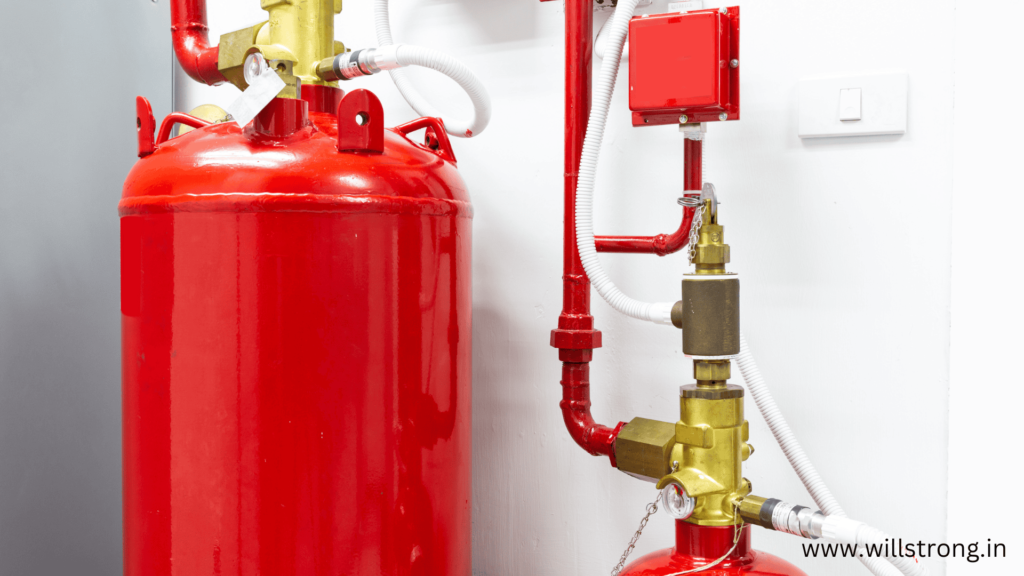In fire safety, protecting critical assets and maintaining operational efficiency is essential. Over the years, FM-200 has been a popular fire suppression agent.
However, despite its benefits, some industries are now reconsidering its use. In this article, we’ll explore what FM-200 is, its advantages, and the reasons why industries are increasingly moving away from it.

FM-200, also known as heptafluoropropane (HFC-227ea), is a clean, colorless, and odorless gas commonly used in fire suppression systems.
It was developed as a replacement for Halon, an ozone-depleting substance phased out in the 1990s. FM-200 works by absorbing heat and disrupting the chemical reactions that sustain fires, effectively extinguishing them in seconds.
One of the key advantages of FM-200 is that it leaves no residue, making it safe to use in environments where sensitive equipment or valuable assets are present, such as data centers, telecommunications rooms, and industrial control centers.
FM-200 offers several advantages that made it a popular choice in the past. Here are five key benefits:
Despite its advantages, several industries are now turning away from FM-200 as a fire suppression solution. Here are the primary reasons:
While FM-200 doesn’t deplete the ozone layer, it is a hydrofluorocarbon (HFC), which has a high Global Warming Potential (GWP).
Increasing environmental regulations and sustainability goals are pushing industries to seek alternatives that are more eco-friendly.
Some companies are opting for greener fire suppression systems, like inert gases (e.g., nitrogen or argon) or water mist systems, which have lower environmental footprints.
With growing global regulations on HFCs, such as the Kigali Amendment to the Montreal Protocol, companies using FM-200 face rising costs to comply with environmental standards.
Industries are now finding it more cost-effective to transition to alternative suppression systems that do not carry these regulatory burdens.
Some regions and countries have already begun phasing out HFCs due to their high GWP. This trend is expected to continue, making FM-200 less viable for long-term use.
Industries are preemptively switching to other options to future-proof their fire safety systems.
Advances in fire suppression technology have introduced more efficient and environmentally responsible alternatives to FM-200.
For instance, inert gas systems and water mist solutions are gaining popularity because they offer similar fire suppression capabilities without the environmental concerns associated with FM-200.
Sustainability is a growing concern for businesses across the globe. Companies want to showcase their commitment to the environment, and using FM-200 can conflict with their green initiatives.
Public pressure and corporate social responsibility programs are driving industries to adopt more sustainable fire suppression solutions.
FM-200 has long been a trusted fire suppression agent, particularly in environments where sensitive equipment must be protected. Its quick-acting, non-toxic, and residue-free qualities made it an attractive choice.
However, due to growing environmental concerns, stringent regulations, and the rise of greener alternatives, many industries are avoiding FM-200 in favor of more sustainable fire safety solutions.
As industries move toward eco-friendly options, it’s crucial to stay informed about the latest technologies and regulations to choose the best fire suppression system for your facility’s safety and long-term sustainability.